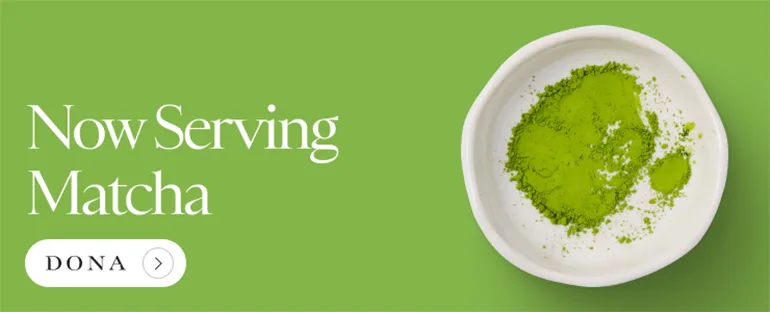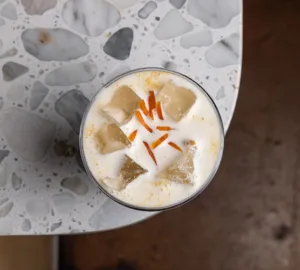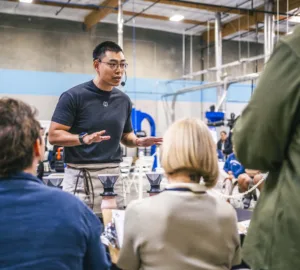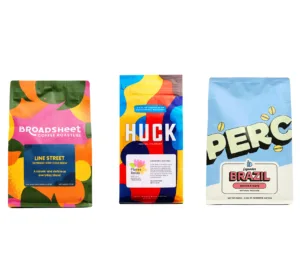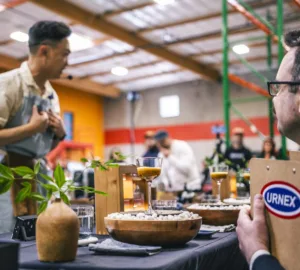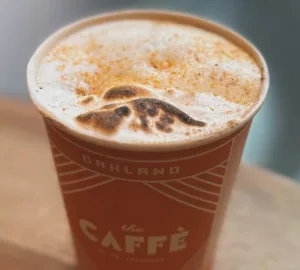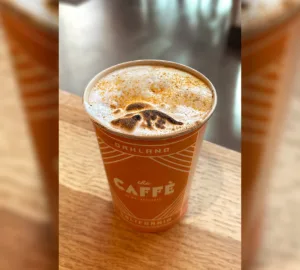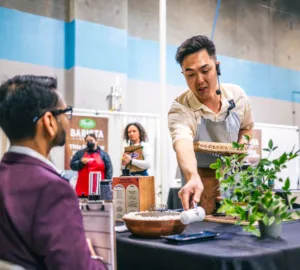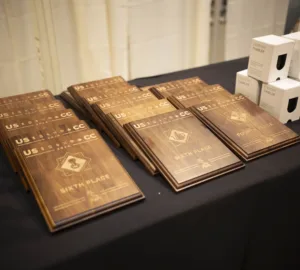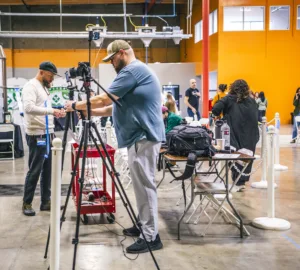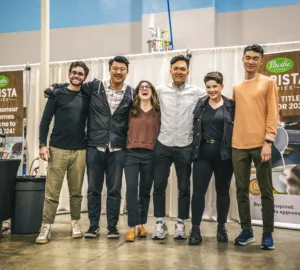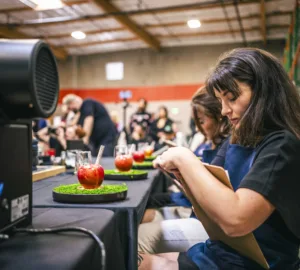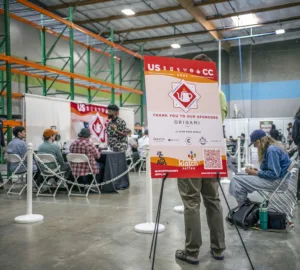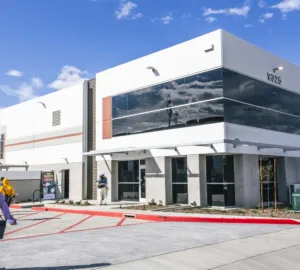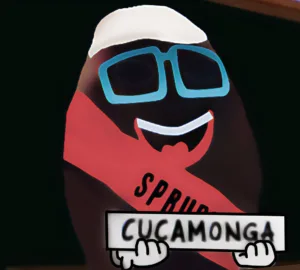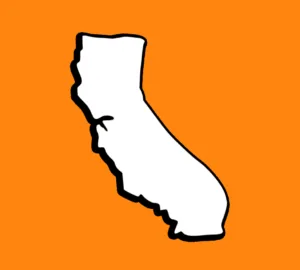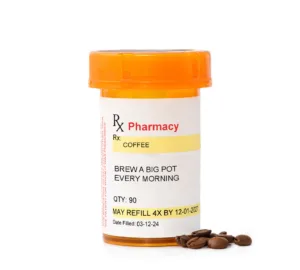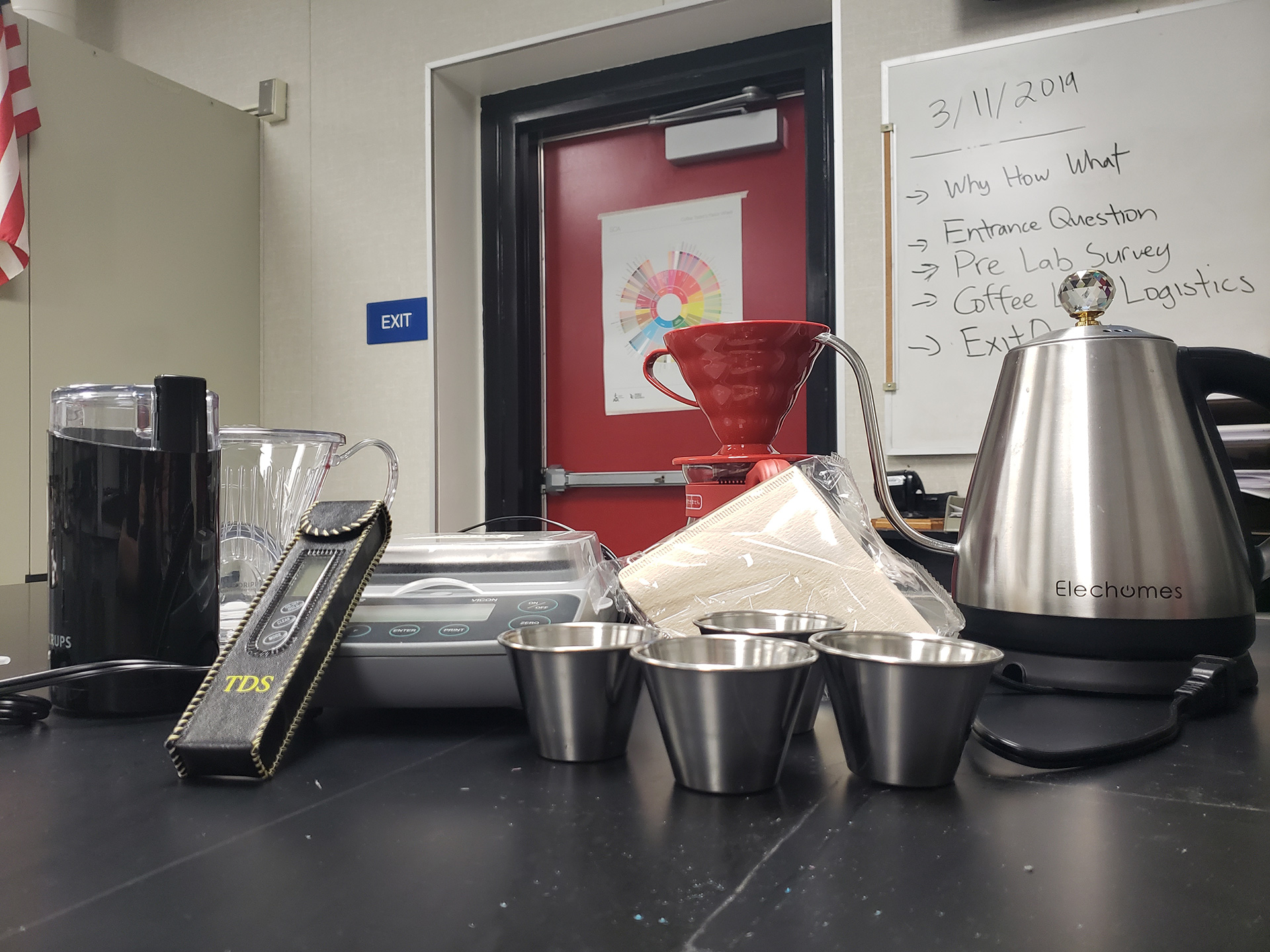
During my senior year of college at UC Davis, I took an introduction to chemical engineering class that taught basic concepts through the medium of coffee. I was intrigued by how the class took something so many college students were familiar with coffee, and could easily use learn concepts as complex as those within chemical engineering. However, over the course of the class, we came to learn that the basic concepts of chemical engineering were not that hard to grasp at all—at least, not when you have coffee to help you learn them!
Fast forward five years later, I am now a high school chemistry and engineering teacher in the city of La Puente, a small suburb 15 miles east of Los Angeles. While bond energies and rates of reactions make sense and are of interest to me, they do not really pique the interest of my students. I searched for a learning opportunity to teach my students chemistry, but in a way that was relevant and connected to their community. The coffee class I took at UC Davis sprang to mind as the perfect medium to do so, and that’s where my journey into the intersection of community, coffee, and the classroom began.
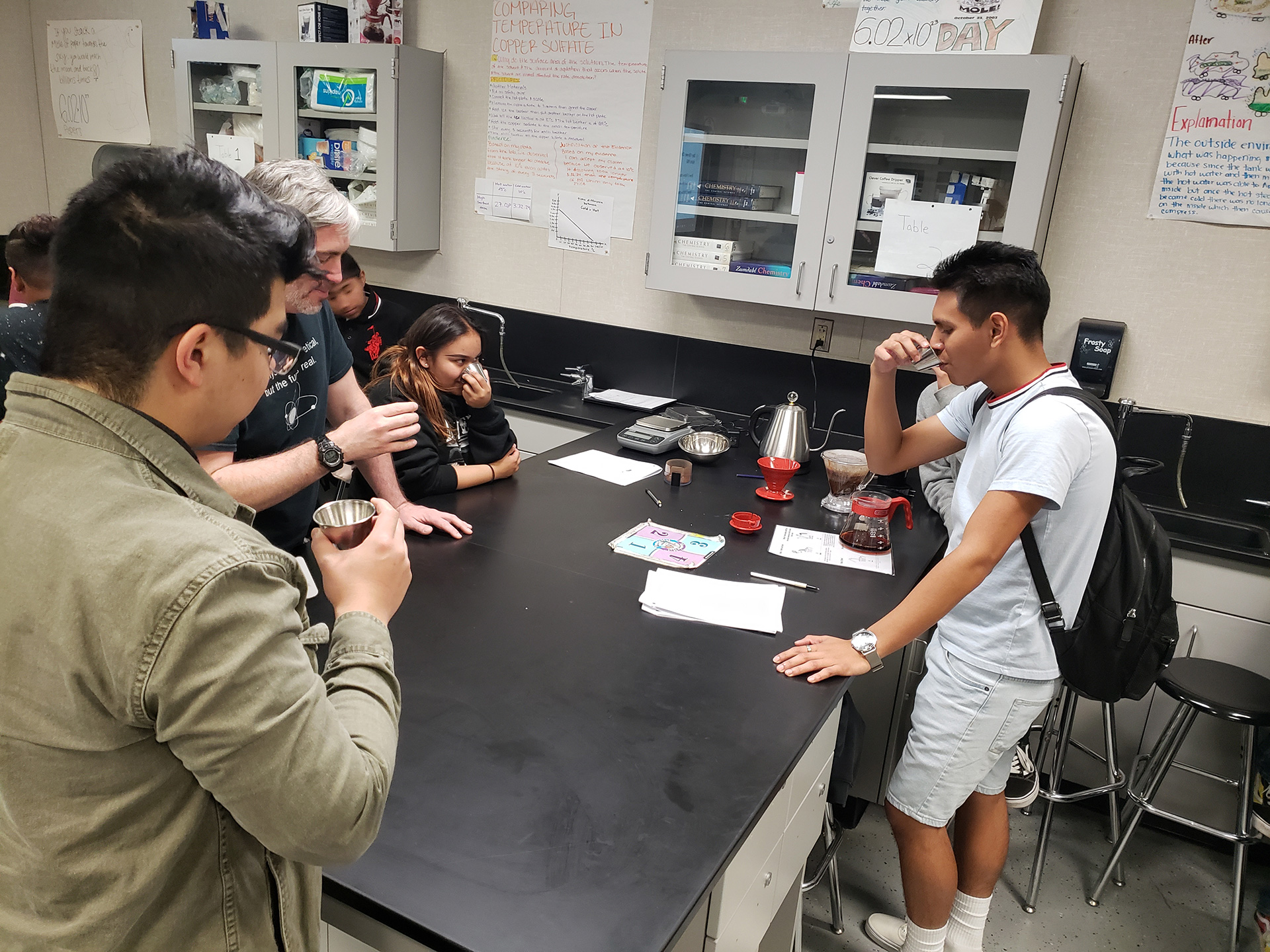
The Coffee Lab and the Community
Over a two-week period, my students embarked on a journey to design a cup of coffee brewed in the most energy-efficient manner they could. Students first learned about the different variables that go into a cup of coffee. They then learned how the temperature of water, the rate of extraction, grind size, and roast profile all affect the overall taste of coffee. Through a generous grant from the local water district, I was able to purchase the equipment needed for eight teams to brew coffee. The total price tag came to just below $900, which included Brita filters, V60s, Clever Coffee Drippers, blade grinders, temperature-controlled kettles, and even tasting cups.
To teach basic brewing principles and educate the class about different roast profiles, I invited professionals from local coffee shops to teach my students about their craft. In a traditional classroom, a professional would come in and explain their job, give out some handouts, and that would be that. However, Irwin Nhan, a friend from Bodhi Leaf, and Rhett Grubbs, a coffee educator at Mantra, provided so much more than the traditional presentation. On behalf of their businesses, Nhan and Grubbs provided coffee beans for the students to use, lent their expertise, and most importantly, showed a sincere interest in the students’ work. Watching the two of them interact with my students, it was clear the value and impact they were having on student buy-in and interest in the lesson. I cannot tell you how surreal it was as a teacher to hear “Mr. N[han], why does it taste different when I use the Clever coffee dripper for three minutes instead of five?” Or, “Mr. Rhett, try my new coffee, I am using a 14 to 1 ratio instead and I ground my coffee to medium-fine!” Although students were initially taken aback by the concept of drinking black coffee, over time they became more receptive to the idea and even began comparing tasting notes with the help of a coffee flavor wheel I put up in class.
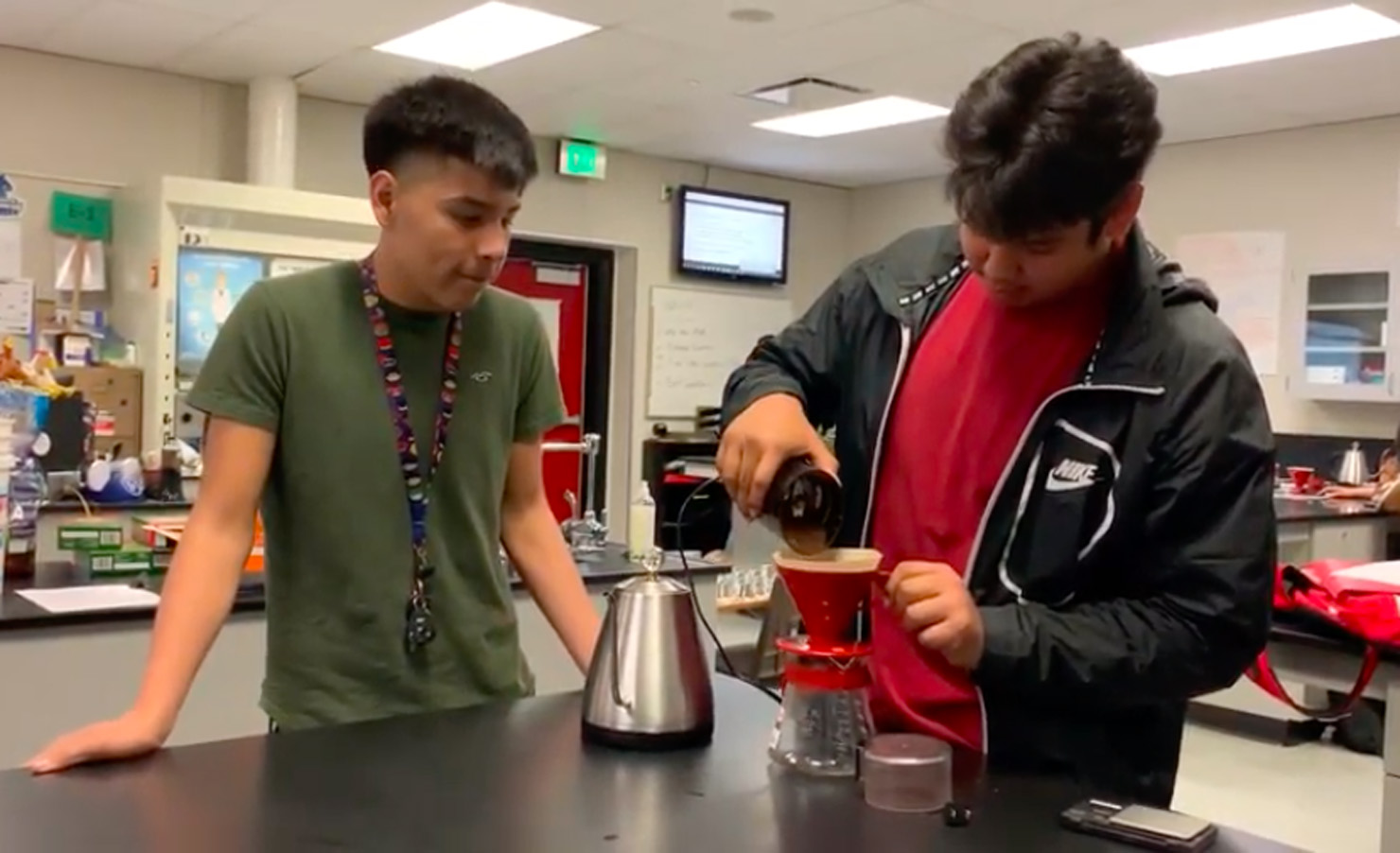
During the second week, students were tasked with taking what they had learned the previous week to design their own coffee using recipes of their own formulation. With the only constraint being the amount of water used, groups chose their own water to coffee ratio, grind size, and type of bean. Students recorded their data using data tables, and over a three-day period they completed multiple trials to get their ideal coffee down. On the fourth day, students presented their final designs to a panel of judges consisting of teachers and Nhan and Grubbs, the professionals who had stopped by the previous week in class. The judges’ overall ratings on coffee flavor and strength and the overall amount of energy (in kilojoules) used in grinding the beans and boiling the water were taken into consideration to determine an overall winner.
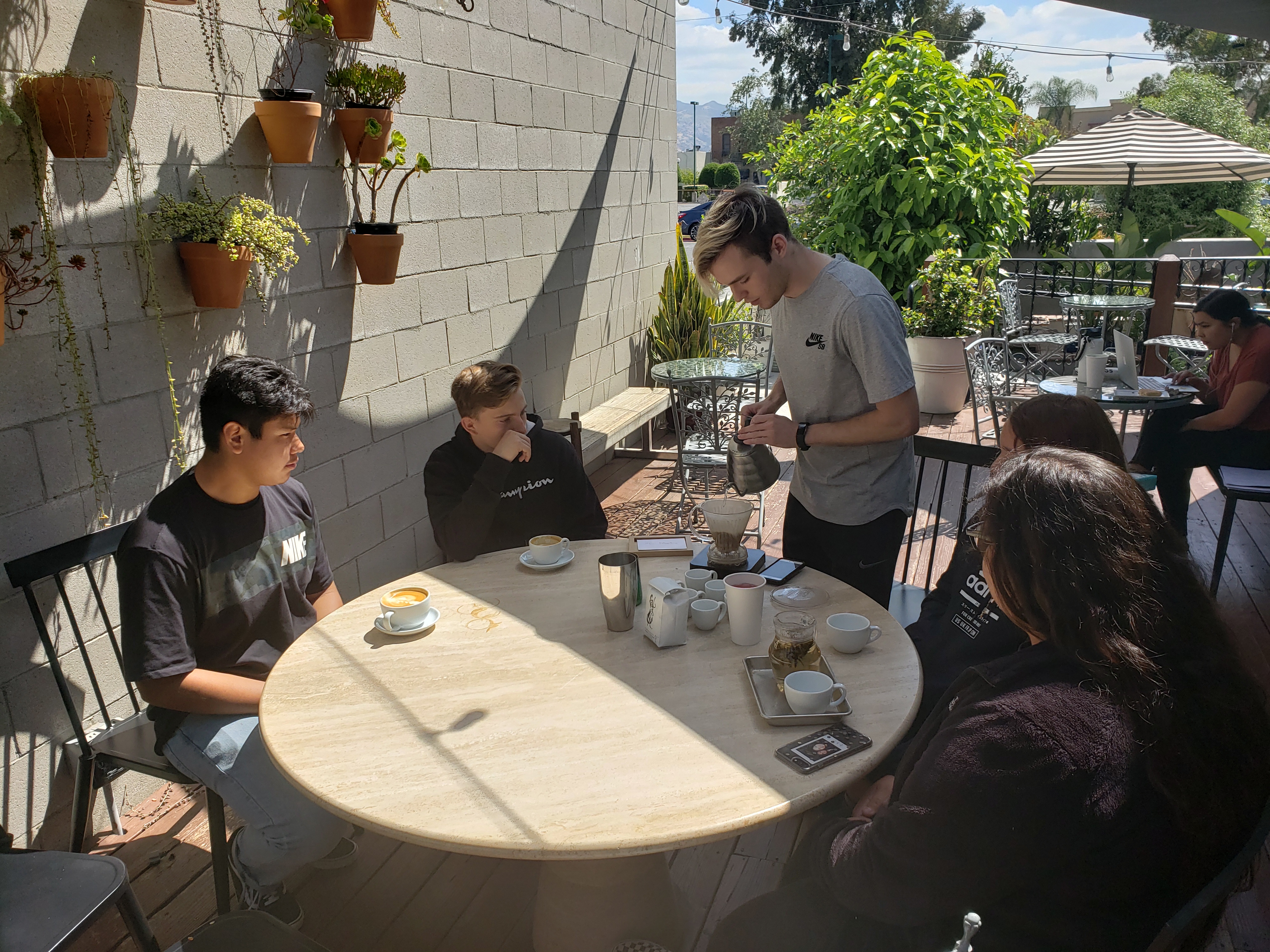
The Community to the Classroom
Only after a winning brew team was selected did I begin to appreciate the power involving community can have on students in the classroom. As a prize to the winning team, I created a field trip in which students from the winning team were able to visit Bodhi Leaf and Mantra. At Bodhi Leaf, my students were introduced to Jared Hales, the head roaster and QC Manager. He took the time to teach our students the process of making coffee from bean to cup. At Mantra, Grubbs not only met with my students but made a pour-over for them. The students told me how important and meaningful it was to have coffee professionals share their expertise and time with them. They told me how they had no idea how much could go into a cup of coffee, and how this experience inspired some of them to perhaps open up a coffee company of their own someday. These revelations were the product of individuals and businesses, donating their time and resources, to help bring the chemistry concepts of concentrations, reaction rates, and temperature and solubility, to life through the medium of coffee.
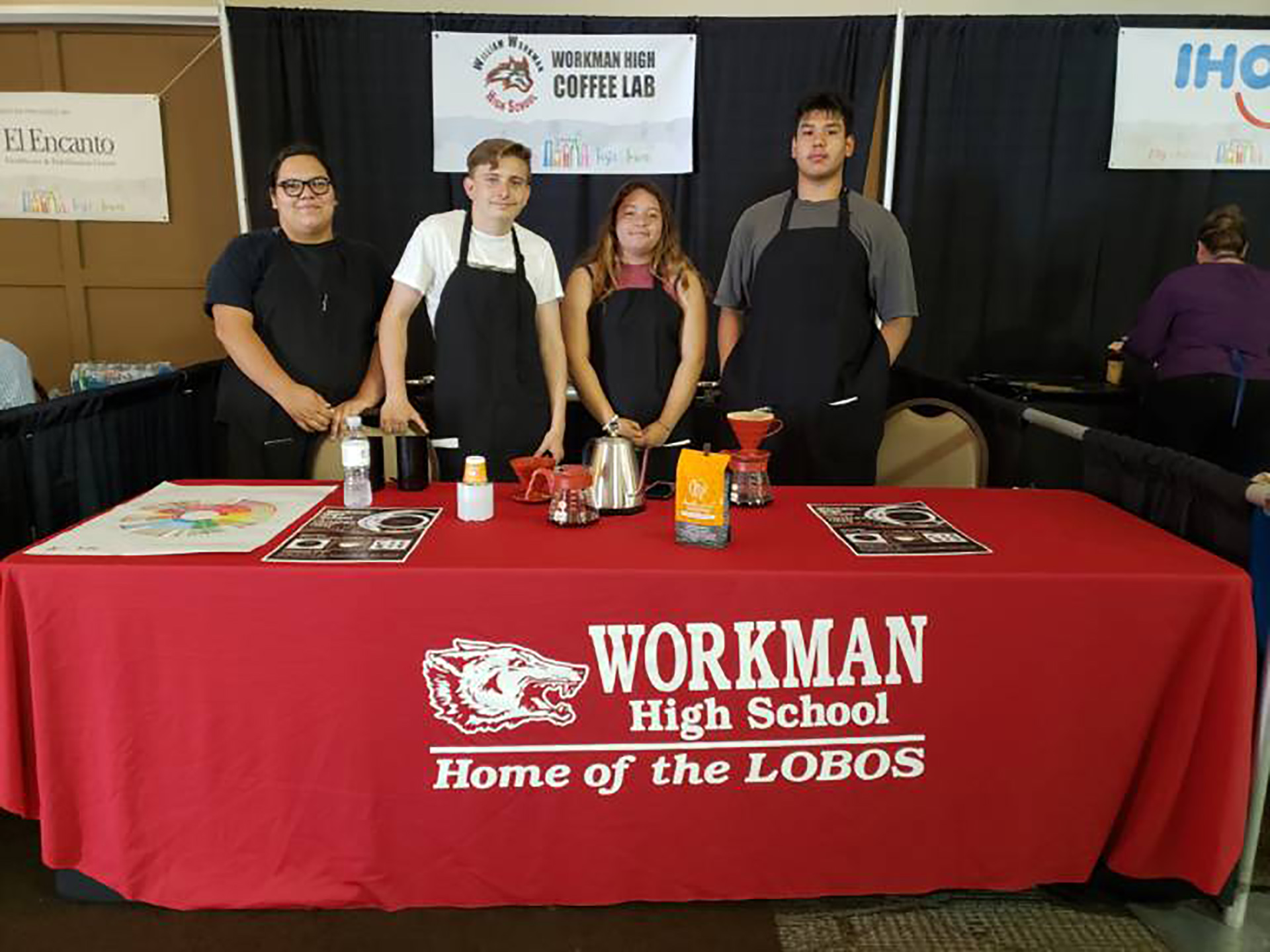
The Classroom to the Community
As a final extension, the local business council hosts an annual Taste of the Town, an opportunity for restaurants and other businesses to showcase their food. Through a last-minute request, our winning coffee team was invited to showcase its coffee at the event next to local restaurants. In the last stage of this lab, what had started out as an opportunity for students to feel heard and recognized by coffee professionals morphed into an opportunity for my students to feel empowered, serving the coffee they designed to people beyond the classroom. I watched my students serve their coffee with pride to others, many coming back three or four times for refills! They also received a certificate from the city for their contribution as well.
Moving forward
The purpose of this article is to not only highlight the coffee companies and individuals who were willing to contribute to the class but to note the positive long-term effects of their doing so. As a chemistry and engineering teacher, the connection between coffee and my curriculum is very evident, and a connection I want to build on in the future. It was wonderful to discover the very real opportunity—if not perhaps duty?—coffee shops can have in terms of providing an influential and lasting benefit to the youth in the communities in which they do business.
Merek Chang is a high school chemistry teacher in City of Industry, California. This is Merek Chang’s first feature for Sprudge.













